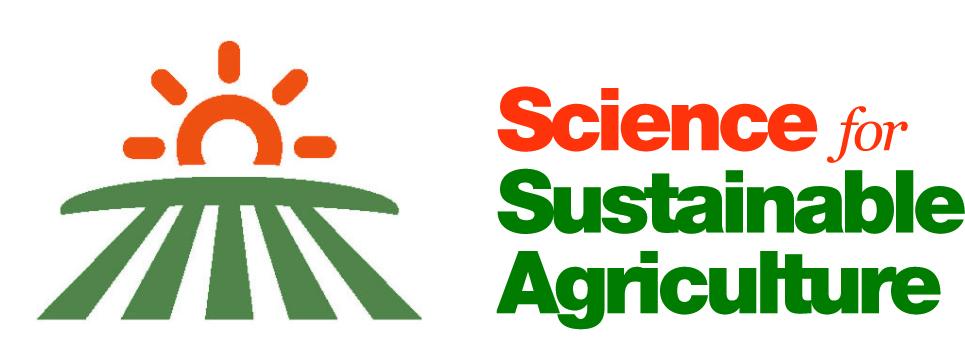The unnatural nature of food (Part 2)

Thought piece from Matt Ridley via Science for Sustainable Agriculture
Science writer Matt Ridley continues to explore the concept of ‘naturalness’ in food and farming, arguing that our obsession with food being natural is getting in the way of our food being plentiful, affordable, healthy and good for nature. He suggests that the more concentrated and productive we make our farming systems, the better it is for nature by using less land, less water and fewer natural resources.
My first article concluded with a quote from the evolutionary biologist Richard Dawkins, who argued that farming has always been unnatural, and that every morsel of our food has been genetically modified from its wild or ‘natural’ form.
“Playing God? We’ve being playing God for centuries!” he said.
But I suspect that this is not a popular conception, given the myriad of food products currently marketed as ‘100% natural’.
So in trying to fathom what lies behind the perception of ‘naturalness’ in relation to food, I wonder if it is possible to draw a line and say when we began making unnatural food?
Was it when modern crop varieties were first produced by hybridisation? The remarkable development of high-yielding dwarf varieties of wheat in the 1950s by Cecil Salmon, Orville Vogel and Norman Borlaug led to the Green Revolution, which thanks to Borlaug’s persistence saved India and Pakistan from starvation in the 1960s and transformed world agriculture. But he was opposed all the way by people who argued that these dwarf varieties were not ‘natural’.
Was it when food was first grown with artificial pesticides then? Well, that takes us back to the early 20th century, when the first synthetic chemicals replaced the arsenic- and copper-based pesticides which farmers had relied on before then.
Was it when food was first grown using tractors rather than horses that food became unnatural? Thank goodness this happened, because otherwise we would need 25% more land to grow hay for the horses, and food would be vastly more expensive.
Indeed, without the tools of modern agriculture, the world would have much less room for nature. We would have to plough more land, cut down more forests, drain more wetlands.
Was it when food was first grown with artificial fertiliser? This, of course, is the organic farming industry’s sacred red line – that it never uses synthetic fertiliser made in an ammonia factory.
The Haber-Bosch process, by which almost all modern nitrate fertiliser is produced, was perfected in 1913 by Carl Bosch after a discovery by Fritz Haber. It involves the use of vast machines to create immensely high pressures and temperatures, so that in the presence of a catalyst made of iron oxide, nitrogen in the air will react with hydrogen. Hardly a natural process.
It is an astonishing fact that although the world’s population quadrupled in the 20th century, thanks to scientific innovations like the Haber-Bosch process we also largely abolished famine. In real terms, the cost of food fell by an amazing 75% over the same period – all by unnatural means. Thanks to modern, science-based agriculture, today we need around two-thirds less land to produce a given quantity of food, averaged over all crops, than in the middle of the last century, a fact that keeps wrong-footing those who have forecasted imminent starvation and disaster, decade after decade. However, if we had relied on organic farming to feed around eight billion people today, we would have needed to farm over 80% of the world’s land surface, whereas in fact we farm about 38%. There would be no national parks left, no wetlands, not much rainforest, and we would still be starving.
So it is a bit rich to demand only natural sources of fertiliser and claim to have the planet’s best interests at heart.
In any case, the alternative to manufacturing fertiliser from nitrogen in the air is taking it from nature.
Before the First World War, agriculture relied heavily on a mineral called Chilean saltpetre, or salitre. This was a rich nitrate salt made by boiling caliche, a mineral found in abundance in the Atacama desert, the result of dessicated ancient seas uplifted into the mountains, exposed and left undissolved by the extreme dryness of the climate. By 1900 Chile was producing two-thirds of the world’s fertiliser, and much of its explosives. Was this natural?
And before that, guano was crucial to feeding the world, mined from dry offshore islands off the coast of Peru in a sea rich in fish. This combination of circumstances attracted millions of breeding birds, mainly shags and boobies. Since it almost never rained to wash the islands clean, their rich droppings had accumulated, century after century, until there was a white guano soil hundreds of feet deep, steeped in urea, ammonium, phosphate and potassium. Perfect for enriching the yields of European farms.
Over the middle decades of the nineteenth century, millions of tonnes of guano were mined in horrific conditions, mainly by Chinese indentured labourers who were little more than slaves, to satisfy the needs of farmers in Britain and other parts of Europe. Ships queued for months to await the chance to load the dusty and foul-smelling cargo. The guano boom made great fortunes, but by the 1870s it was all over. Was this natural?
As Richard Dawkins observed, ever since departing our natural hunter-gatherer condition some 10,000 years ago, human beings have been doing artificial things in search of food.
Are any of the practices described above any more ‘natural’, simply because they are old-fashioned?
Of course not.
But our obsession with products and farming systems perceived to be more natural risks preventing our food from being plentiful, affordable, healthy and good for nature. The more concentrated and productive we make our farming systems, the better it is for nature by using less land, less water and fewer natural resources.

